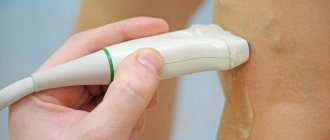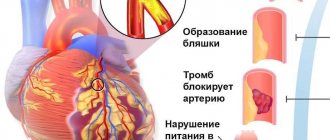The article is not a complete guide to performing breath holds and cannot be a substitute for personal guidance from an experienced teacher.
The volume and frequency of breathing determine a lot in what effects we will receive when performing breathing practices. In particular, an increase in the frequency and depth of breathing in certain combinations leads to hyperventilation
– increase in minute volume of breathing (more details here).
What is hypoventilation?
No less interesting nuances concern hypoventilation
- a condition in which smaller volumes of air pass through the lungs than are currently required by metabolism.
Hypoventilation can be achieved in two ways: by reducing the tidal volume (that is, we will inhale a small volume of air) and by reducing the respiratory rate (we will breathe rarely, reducing the number of respiratory excursions per minute). It is clear that it is possible to use both paths at the same time - in extreme terms, we get breath holding.
Let us recall that the minute volume of respiration (MVR) is the product of the respiratory rate per minute and the tidal volume. If the average person at rest breathes approximately 15 times per minute, inhaling 500 ml of air at a time, then the MVR will be 7.5 liters. This is normal ventilation of the lungs at rest.
Now let’s imagine a yoga practitioner who breathes at a frequency of not 15, but 2 times per minute. At the same time, each time he inhales and exhales as fully as possible, using the entire vital capacity of the lungs (which is, say, approximately 4.5 liters).
2 times per minute * 4,500 ml = 9,000 ml
That is, in this case we will get an excess of the normal MOD. It would seem that the breathing rate is significantly reduced (only one inhalation and exhalation every 30 seconds). However, strictly speaking, this condition should be called hyperventilation, since there is a clear increase in the normal MOV.
It should be emphasized that the practice of yoga - asanas, sukshma and prana vyayama, preparatory breathing techniques - helps to increase the vital capacity of the lungs, and in a sense will help to increase minute ventilation when practicing, for example, full yogic breathing.
And only with a significant decrease in the respiratory rate (as the duration of the respiratory cycle approaches 45 seconds) will the minute ventilation of the lungs gradually creep down.
We can rightfully call a decrease in the minute volume of ventilation of the lungs hypoventilation. Strictly speaking, from this point of view, it is not so important whether there are breath holds or not, if the duration of the respiratory cycle is increased so much that this leads to a significant decrease in ventilation. Hypoventilation can be achieved without holding the breath, but with significant stretching and prolongation of the respiratory cycle.
It is much easier for a beginning practitioner to achieve a state of increased ventilation than a significant and prolonged decrease in ventilation. Not surprising: strengthening the respiratory muscles and increasing the mobility of the joints of the chest is a task that can be solved within several months; but it takes much more time to train the respiratory center and increase the duration of the respiratory cycle.
Patanjali called pranayama “stopping the movement of inhaled and exhaled air,” that is, in essence, hypoventilation. It should also be remembered that according to the same source, pranayama “makes the mind fit for concentration.”
How to do an exercise to develop your brain
Exercises to activate brain activity are best performed in the morning, when all body systems have already switched on after a night's rest and are ready to work. Before you begin the exercises, you should spend a few minutes meditating. If you can’t concentrate on one subject, you can simply sit for a few minutes with your eyes closed. This helps you tune in to the exercise and feel your body better.
Exercise for brain development:
- Stand straight, feet shoulder-width apart, arms down.
- Press your tongue against the roof of your mouth so that the tip rests on your upper teeth.
- Cross your arms over your chest so that your right hand is on top.
- With the fingers of your left hand, grasp the lobe of your right ear, and with the fingers of your right hand, grasp the lobe of your left ear. The thumbs should be on the outside of the ear, and the index finger should be on the outside.
- Keeping your fingers on your earlobes and your tongue pressed to the roof of your mouth, slowly do a deep squat. As you bend your legs, you need to take a deep breath. Sitting down, hold your breath for 1 second.
- Slowly rise as you exhale to the starting position.
You need to repeat the exercise for 1-2 minutes. Daily repetition of such squats helps restore damaged neural connections and form new ones. It should only be performed in the morning and during your lunch break at work. Activating your brain in the evening is harmful. Before going to bed, he enters a state of rest in order to process the information received during the day. If the brain is forced to work actively during this period, it will not be able to recover normally during sleep.
How can hypoventilation improve our ability to concentrate?
When performing hypoventilation breathing techniques, hypoxia
(decreased oxygen levels) and
hypercapnia
(increased carbon dioxide levels). Both lead to certain effects, including those focused on the state of the central nervous system.
At first glance, hypoxia is a negative condition, since the body needs sufficient amounts of oxygen for adequate energy exchange. This is absolutely true when it comes to chronic hypoxia - for example, an organ that is constantly in conditions of oxygen starvation due to atherosclerosis of the arteries that supply it will suffer until it loses its normal functions.
It’s a completely different matter if hypoxia has a dosed, moderate and regular effect. This hypoxia should be called hypoxic training.
The human body has the ability to resist hypoxia. To achieve this, various mechanisms are activated to help maintain the level of tissue oxygenation at a level close to normal. Periodic hypoxic exposure enhances those functions that ensure the delivery of oxygen to the cell. As a result, the power of systems providing oxygen transport increases, and the body’s resistance naturally increases not only to the effects associated with the onset of hypoxia, but also due to the cross-effect, to other environmental factors. Hypoxic resistance increases both at the systemic, organ, and cellular level - due to the training of “cellular” respiration (V.V. Goranchuk, N.I. Sapova, A.O. Ivanov, 2003). Hypoxic training leads to an increase in the oxygen capacity of the blood, increased blood microcirculation in tissues, and improved processes of oxygen diffusion into cells. Increasing the number of mitochondria and stimulating the activity of respiratory enzymes is of great importance.
Mitochondria is an intracellular organelle responsible for oxidative energy processes (photo by Professors P. Motta & T. Naguro).
Experimental studies have shown that intermittent hypoxia (PH) has a neuroprotective effect in hemorrhagic stroke, and also reduces the size of cerebral infarction and limits inflammation after transient occlusion of the middle cerebral artery. PG has a pronounced beneficial effect on cerebral circulation in experimental Alzheimer's disease (AD). In rats with experimental AD, PG almost completely prevented endothelial dysfunction of cerebral and extracerebral vessels, thinning of the vascular network and loss of neurons in the cerebral cortex. Thanks to these protective effects, PG ultimately prevents memory impairment and the development of experimental AD in animals (Downey G.F. et al., 2015).
The above effects of hypoxic training in the long term make cells more efficient and resistant to stress; to a large extent this concerns brain neurons, which are very sensitive to hypoxia.
Dosed regular hypercapnia, that is, an increase in CO2 levels, also has its positive effects. A prospective study included 100 people aged 40 to 80 years with ischemic changes in the myocardium and trained on a hypoxic-hypercapnic breathing simulator. The training consisted of daily breathing exercises using a simulator, during which the level of CO in the inhaled air gradually increased, causing mild hypercapnia, but no significant hypoxia was detected. A natural increase in CO2 voltage was detected by 6.2 mm Hg from the initial value, which ensured an improvement in blood supply to the myocardium by 12% of normal (100%). This change is explained by long-term exposure to hypercapnic load on the body, as a result of which the body undergoes a number of positive changes, namely: regulation of the breathing rhythm, relief of vascular spasm, which stimulates blood circulation and helps reduce hypoxia. After a course of hypercapnic training, the majority of subjects (68%) experienced a decrease in ECG signs of ischemia (Vartanova O.V., Radysh I.V., 2015).
An increase in CO2 levels promotes the expansion of small arteries (the tone of which determines the number of functioning capillaries) and an increase in cerebral blood flow. It is assumed that as a result of systematic hypercapnic training, the production of vascular growth factors is activated, which leads to the formation of a more branched capillary network and optimization of tissue circulation in the brain.
As a result of hypoxic-hypercapnic training, the brain significantly increases its functional capabilities. Research shows that exposure to dosed hypoxic-hypercapnic training for 18 days for 20 minutes daily is accompanied by a statistically significant improvement in well-being by 8.4%, an improvement in logical thinking ability by 26.5% and an increase in RAM capacity by 18.1%. Hypoxic-hypercapnic training contributes to a significant reduction in the degree of subjective depression, moral discomfort and emotional lability by 9.3% in the experimental group compared to the control group (Sukhovershin R.A. Kisarova Y.A., 2010).
Hypoventilation yoga techniques, performed by holding the breath or lengthening the respiratory cycle, are dosed hypoxic and hypercapnic training. Pranayama, which Patanjali defined as “the stopping of the air inhaled and exhaled” (YS, 2:49), increases the functionality of the human brain. Meditative practices (which are techniques for long-term volitional concentration and deconcentration of attention) place high demands on the performance of the brain, its individual zones and neurons. Therefore, effective meditation practice must be preceded by the systematic practice of pranayama, making “the mind fit for concentration” (YS, 2:53).
However, here we should remember the Hatha Yoga Pradipika: “When prana moves, citta moves. When prana is without movement, citta is also without movement. By this the yogi achieves stillness of mind” (HYP, 2:2).
That is, to more effectively stop the mind and concentrate attention, it is holding the breath that is required, and not an extended breathing cycle without stopping it. If you try to carry out a physiological analysis of this postulate, you can recall reflexes based on the processes of stretching of the lung tissue, as well as the respiratory muscles and other structures of the chest; the strengthening and weakening of their tension during inhalation and exhalation changes the activity of the neurons of the respiratory center and the associated parts of the central nervous system (Hering-Breuer reflex). It is possible that dynamic and static excitation of lung and chest mechanoreceptors have different effects on brain activity and activity. In any case, practical experience speaks precisely of this: concentration and single-pointedness of attention are indeed more stable precisely during breath holding, when “prana is without movement.”
Yoga for heart disease
Coronary heart disease is of primary importance for circulatory disorders. Yoga for the heart and blood vessels implies the following rules:
- active practice is excluded;
- static poses are prohibited;
- you should not perform asanas that increase gastric secretion or strain the abdominal muscles;
- Turning over is not recommended.
All about the prevention of hypertensive crisis: effective methods.
How to use honey, ginger and lemon for hypertension: recipes, recommendations.
Read what pills doctors prescribe for cerebral vessels.
Kumbhaka technique or breath holding
Breath retention or kumbhaka
, can be performed after exhalation and after inhalation.
The delay after inhalation is called antar kumbhaka
, or internal retention - it means that with this version of kumbhaka, the air is inside the body (therefore the delay is internal).
There are two variants of antar-kumbhaka. The first - correct - is performed by contracting the inspiratory respiratory muscles, that is, the inspiratory muscles: the external intercostal muscles and the diaphragm. When performing the second - incorrect - version of antar-kumbhaka, air is retained in the chest due to compression of the glottis.
The blood supply to the brain (like any other organ) can be conditionally reduced to the balance of two processes: arterial inflow and venous outflow. Both components must be in balance so that intracranial pressure (ICP) is maintained within the required limits. If the venous outflow is worsened for some reason, then a reflexive decrease in arterial inflow occurs - in order to avoid an excessive increase in ICP and overload of the general vascular system of the brain. A decrease in arterial inflow can only partially compensate for the deterioration of venous outflow. As a result of further disruption of venous outflow, arterial inflow may decrease (which in itself is undesirable), and at the same time ICP increases, which can be unfavorable for many internal processes occurring in the nervous system.
Antar-kumbhaka, performed by engaging and statically contracting the inspiratory muscles with a relaxed glottis, creates negative pressure in the chest and in the large veins flowing into the right atrium. This facilitates venous outflow from the cranial cavity and creates the most favorable conditions for arterial blood supply to the brain, for the processes of liquor circulation and lymphatic drainage.
Antar-kumbhaka, performed with relaxed inspiratory muscles and by compressing the glottis (thus blocking the exit of air from the chest) leads to an increase in intrathoracic pressure and disruption of venous outflow from the cranial cavity, a decrease in arterial blood supply, as well as possible disruption of processes in cerebrospinal fluid and lymphatic systems of the brain.
These patterns will be more relevant the longer the breath hold is performed.
To fully perform antar-kumbhaka, the respiratory muscles must be previously prepared by the practice of prana-vyayama (more details here).
Holding your breath after exhaling – bahir kumbhaka
- called external retention, since the air is outside the body. Bahir Kumbhaka creates deeper hypoxic conditions, since when it is performed, there is no reserve of air and oxygen in the lungs. Therefore, some sources recommend mastering bahir kumbhaka after mastering antar kumbhaka.
When performing a relatively long bahir kumbhaka, adequate conditions for cerebral circulation should also be ensured, which requires creating negative pressure in the chest. Under conditions of deep exhalation, this is possible by performing uddiyana bandha.
– when the glottis is compressed, the inspiratory muscles (that is, the inhalation muscles) contract, resulting in a drop in pressure in the chest and an improvement in venous outflow from the cranial cavity. Therefore, bahir kumbhaka is performed with uddiyana bandha to avoid increasing intracranial pressure.
Bahir kumbhaka with uddiyana bandha. Photo from the archive of Mikhail Baranov (Moscow).
One of the classic options for gradually incorporating kumhak into practice is the gradual development of visama-vritti-pranayama
(visama-vritti - “unequal vibrations”). In this proportion, the exhalation is 2 times longer than the inhalation, the inhalation delay is 4 times longer than the inhalation, the exhalation delay is equal to the inhalation. But mastering this complete proportion should be approached gradually; its step-by-step development is given in the table. You need to start with the simplest proportion without holding your breath; inhalation is equal to exhalation (stage 1 in the table).
| Inhale | Antar-kumbhaka | Exhalation | Bahir-kumbhaka | |
| Stage 1 | 1 | 0 | 1 | 0 |
| Stage 2 | 1 | 0 | 2 | 0 |
| Stage 3 | 1 | 1 | 2 | 0 |
| Stage 4 | 1 | 2 | 2 | 0 |
| Stage 5 | 1 | 3 | 2 | 0 |
| Stage 6 | 1 | 4 | 2 | 0 |
| Stage 7 | 1 | 4 | 2 | 1 |
Inhalation will be the phase that determines the duration of all other phases of breathing and the duration of the entire respiratory cycle. Let's assume that a comfortable inhalation is 5 seconds. At the first stage, the exhalation will also be 5 seconds (proportion 1:0:1:0). Having tested this starting proportion, making sure that it is comfortable and is performed without any problems or discomfort, we move on to the second stage - that is, we gradually lengthen the exhalation. Having reached the proportion 1:0:2:0, we begin to include inhalation delays. At first, antar-kumbhaka is minimal and the duration is equal to inhalation (stage 3), while you need to remember the rules for performing antar-kumbhaka (the glottis is relaxed, the inspiratory muscles are tense). Next, we gradually increase the duration of the inhalation hold, going through stages 4, 5 and 6, arriving at a ratio of 1:4:2:0. The last stage adds bahir-kumbhaka, equal in duration to inhalation (stage 7) and accompanied by uddiyana bandha.
With further practice, the achieved proportion remains unchanged, but the total duration of the respiratory cycle may increase. We started with an inhalation lasting 5 seconds and subsequently the antar-kumbhaka was 20 seconds, the exhalation was 10, the bahir-kumbhaka was 5, and the total duration of the breathing cycle was 40 seconds. By increasing the inhalation to 6 seconds, the antar-kumbhaka becomes 24 seconds, the exhalation 12, and so on.
Another option for mastering kumbhaka is sama-vritti-pranayama.
(sama-vritti – “equal vibrations”). This option is sometimes called the “pranayama square.” Its peculiarity is that inhalation, exhalation, retention on inhalation and exhalation are equal in duration. At the beginning of its development, you need to stretch the respiratory cycle as much as possible to arrive at a ratio of 1:0:1:0. Let's assume that the duration of inhalation and exhalation is 10 seconds, and the duration of the entire respiratory cycle is therefore 20 seconds. Next, without changing the overall duration of the breathing cycle, begin to add a short delay on inhalation and exhalation, thereby shortening the inhalation and exhalation. Gradually we come to equal duration of all components of the proportion.
| Inhale | Antar-kumbhaka | Exhalation | Bahir-kumbhaka | |
| Stage 1 | 10 Seconds | 0 | 10 Seconds | 0 |
| Stage 2 | 8 seconds | 2 seconds | 8 seconds | 2 seconds |
| Stage 3 | 7 seconds | 3 seconds | 7 seconds | 3 seconds |
| Stage 4 | 5 second | 5 second | 5 second | 5 second |
Having strengthened in the proportion of sama-vritti, in the future we can gradually increase each phase of the cycle, stretching its total duration.
Visama-vritti and sama-vritti-pranayama have slightly different effects on circulatory processes and the tone of the autonomic nervous system, so different options may be shown to people of different psychophysiological constitutions (read more about the individualization of kumbhakas and respiratory proportions here).
In general, the options described above are the main schemes with which you can begin mastering kumbhakas; After confidently practicing them, an experienced practitioner can come to his own options that are most suitable for him.
When cerebral circulation suffers
The causes of cerebrovascular accidents are varied:
- arterial hypertension;
- heart diseases;
- cervical osteochondrosis;
- vasculitis;
- action of toxic substances;
- atherosclerosis of neck vessels;
- diabetes.
Impairment of cerebral blood flow can develop over a long period of time, chronically, or occur acutely. To eliminate an acute disorder, the assistance of qualified medical personnel is necessary. You can live with chronic disorders for a long time and help your brain function by taking special medications, following a diet, and exercising.
Safety precautions for performing kumbhaka
It is necessary to dwell in detail on the safety precautions for performing kumbhak. The basic rule is the following: pranayama practice should be performed in comfort mode!
An increase in breath holding and the duration of the respiratory cycle should occur spontaneously, on its own, without gross volitional intervention. You should not, straining and overcoming the desire to inhale quickly, perform a certain breathing proportion. The chosen proportion and its duration must correspond to your current capabilities. It is very important that you can perform the breathing proportion for a long enough time. There is no point in laboriously performing a certain proportion or long kumbhaka several times, only to then greedily swallow air and restore breathing. It is much better to take a comfortable proportion and perform it for a relatively long time. If after 5-10 minutes of practice you begin to experience discomfort, it means that this proportion is still premature and you need to “go down” to the previous level, choosing a breathing mode in which you can breathe calmly for 30 minutes or more.
In the practice of hypoxic training (which is pranayama), not only the proportion of breathing and the duration of the respiratory cycle are important. The duration of the pranayama session is important. To achieve the desired results, fairly long sessions are usually required - 30 minutes or more.
If you can freely, without tension or discomfort, perform one or another breathing proportion for a long enough time, then you can carefully move on to the next step. Often, an increase in kumbhaka occurs spontaneously, and this is the best option. That is, progress occurs without our volitional intervention - not “I breathe,” but “I breathe.”
Sometimes progress in the practice of kumbhaka occurs slowly and the increase in the proportions of breathing takes months or years of regular practice. This is normal, since progress is due to the gradual restructuring of the mitochondrial apparatus of cells. In other words, progress in hypoxic training is determined by the processes that this training causes.
In addition, the practice of kumbhak leads to a gradual adaptation of the respiratory center (RC), its sensitivity to hypercapnia and hypoxia (more about the respiratory center and its role in practice here). Different people have different sensitivity and excitability of the DC from birth - that’s why some people initially hold their breath quite long, while others have to achieve such results through years of persistent practice.
Thus, progress in the practice of hypoventilation yogic techniques is due to the gradual restructuring of the mechanisms of intracellular respiration and training of the respiratory center. There may be individual differences, but hypoxic training is always a gradual process. Rough volitional interference in the processes of breathing regulation often leads to functional disorders of the circulatory and respiratory systems.
Downward facing dog
Downward facing dog is great for circulation because it puts the hips over the heart and the heart over the head, meaning gravity helps facilitate blood flow to the head. It also strengthens your legs by improving blood circulation in them.
Downward facing dog
Muscles worked: Hamstrings, latissimus dorsi, deltoids, glutes, serratus anterior and quadriceps.
- Get on all fours with your shoulders above your wrists, your hips above your knees, and your toes tucked.
- Take a deep breath, and as you exhale, squeeze your hands tightly, lifting your hips into the air, straightening your arms and legs.
- For some, this may be an immediate good position. For others, you can simply move your legs back to make it comfortable.
- Breathe normally but deeply, pressing with each finger and pressing your heels into the floor. Your heels may not touch the ground, depending on your stance, but you want them to work in that direction, keeping your legs active.
- Let your neck relax, but not droop.
- Stay here for three long, deep breaths. (You can repeat this several times, although it would be better to do the entire series several times, starting with this pose each time.)
Contraindications for kumbhaka
The practice of kumbhak is contraindicated in case of functional disorders of the cardiovascular and respiratory systems, ischemic conditions, and various blood clotting disorders (both with a tendency to thrombus formation and with increased bleeding). We can say that any serious deviations in health are a limitation for the practice of holding the breath.
It should be remembered that moderate dosed hypoxia and hypercapnia are often used for medicinal purposes. But the use of these techniques should be carried out under the supervision of an experienced specialist.
Tips for Beginners
To make the exercises easy and bring only benefits, you need to follow the rules of safe exercise:
- exercise only in a good mood;
- ventilate the room before classes;
- When performing exercises, do not be distracted by extraneous thoughts;
- while performing asanas, do not overexert yourself and prevent pain from occurring;
- If classes cause discomfort, you should stop and choose a different technique.
You need to end the lesson with complete relaxation. After a burst of activity, the brain needs to return to normal operation, otherwise the person will quickly become overtired. This can lead to the development of insomnia and neurosis.









